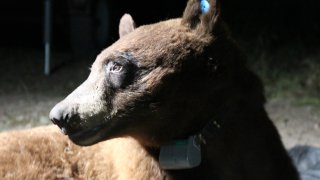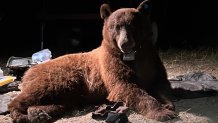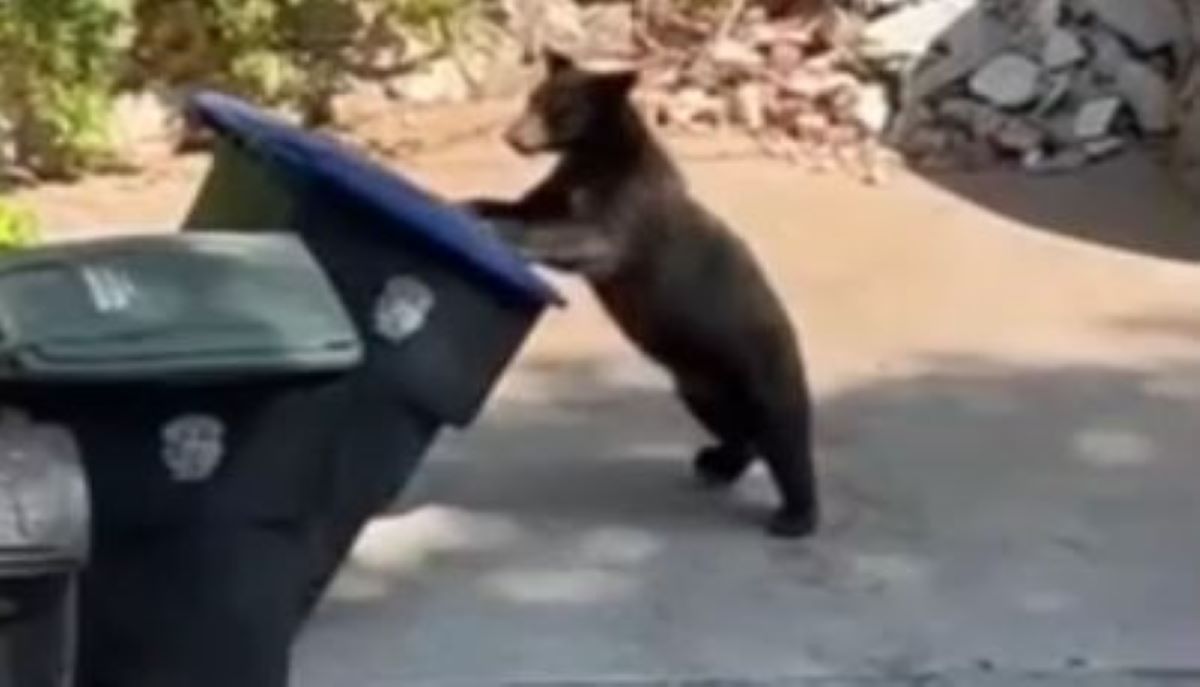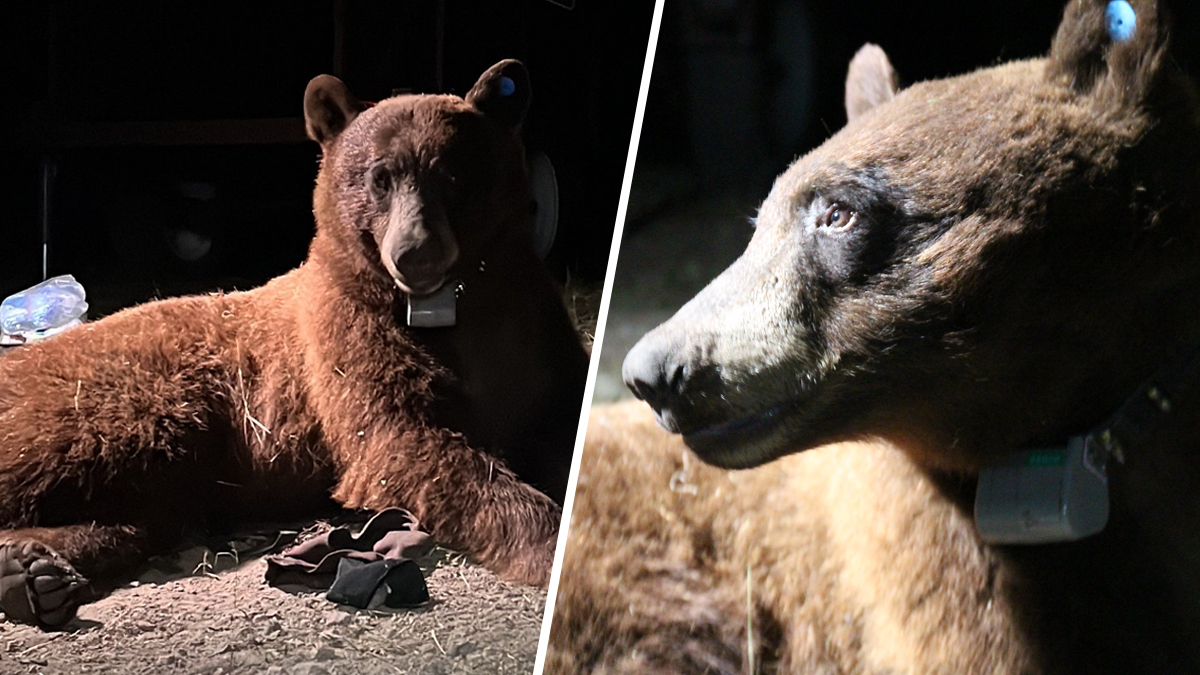
A black bear who lived life on the move and cut a handsome profile in a photo taken after he was captured and fitted with a tracking collar earlier this year was struck and killed this month in a traffic accident on the 101 Freeway.
BB-12, whose collar allowed researchers to track him for the last three months, was struck and killed July 20 at the top of the Conejo Grade between Newbury Park and Camarillo.
The 3- to 4-year-old 210-pound bear covered a lot of ground during an unusually mobile life for a black bear that required crossings of major Southern California roads at least five times.
Get top local stories in San Diego delivered to you every morning. >Sign up for NBC San Diego's News Headlines newsletter.
"On the sixth time, he unfortunately got hit," said Jeff Sikich, the lead field biologist for the mountain lion study at Santa Monica Mountains National Recreation Area. "When any of our radio-collared animals get killed on the road, it’s sad but not that surprising after 20 years of studying these animals in the region. Roadkill is the number one source of mortality for our mountain lions, so there’s no reason to believe it would be much different for other large carnivores."
The agency initially captured BB-12 in April in the western Santa Monica Mountains south of the 101 Freeway. He likely lived in the mountains for two years and probably originated from the Santa Susana Mountains north of Highway 118. BB-12 made at least two visits to beaches in Malibu and, a few weeks after he was fitted with a GPS radio collar, crossed the 101 Freeway, Highway 23, and the 118 Freeway en route back to the Santa Susana Mountains.
His final days of rambling included a midnight visit to the Wildwood Canyon neighborhood in Thousand Oaks. Hours later, a driver called the California Highway Patrol to report an accident around 10:30 p.m. that same day. A National Park Service biologist noticed the bear on the median, stopped to help and, with assistance from California Highway Patrol officers, transported the carcass to a NPS freezer facility.
Bear sightings in the Santa Monica Mountains are rare, and researchers were looking forward to learning more about wildlife connectivity as they followed BB-12 on his unusual travels in the SoCal wilderness. In the early 2000s, a bear carcass was found under a landslide in Malibu Creek State Park. In 2016, a bear was documented three times over three months on trail cameras in the central part of the mountains, but never detected again.
Bears can live between 15 to 25 years, bu BB-12 provided important information during his short, but very active, life.
"He provided valuable information in the short time that we studied him," said Seth Riley, the wildlife branch chief for SMMNRA. "Wide-ranging animals like this young male bear are especially useful for learning about connectivity in the region, and this was certainly true of BB-12, given the five major road crossings that he made in such a short time."

The Conejo Grade northwest of Los Angeles will be at the center of a new wildlife study later this year by NPS biologists in cooperation with the Ventura Transportation Commission, Caltrans, and the California Department of Fish and Wildlife. About 10 miles southeast of the crash site, the Wallis Annenberg Wildlife Crossing project over the 101 Freeway in Agoura Hills began construction on Earth Day 2022 with completion expected in 2025.
"This just points even more to the importance of learning about connectivity, or the lack thereof, in this area," Riley said. "In the long run, it would be great to increase opportunities for animals to safely cross in this area, too. We’ll see."
Black bears, which can have different color coats, like to feed on plants, insects, nuts, berries and whatever else they think of as edible -- such as the contents of trash bins. If food is scarce in their natural habitat, bears are likely to forage elsewhere, bringing them into Southern California foothill neighborhoods.
California's black bear population has been on the rise over the last two decades, growing from an estimated 10,000 to 15,000 in the early 1980s to between 25,000 and 30,000 -- and that's a conservative estimate, according to the state department of fish and wildlife.
Black bears, recognized by their small, narrow heads and small ears, have coats that range in color from tan or brown to black. Females grow up to about 200 pounds and males can be a hefty 350 pounds with some giants weighing in at more than 600 pounds
About half of the state's bear population can be found in the Sierra Nevada Mountains and areas to the north and west. Only an estimated 10 percent of the black bear population inhabits central western and southwestern California.
Although its on the state flag, the fearsome grizzly bear no longer can be found in the California wild. The last grizzly bear observed in California was shot in the early 1920s.



